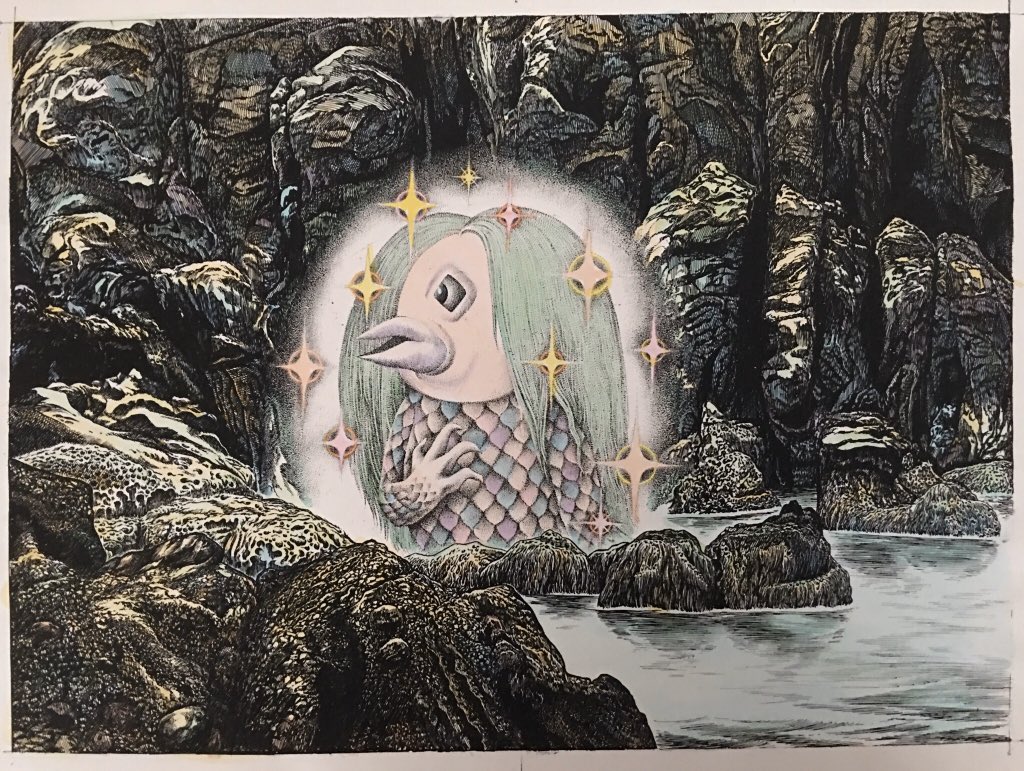People have different ways of dealing stress and fear, especially during a protracted battle with a worldwide pandemic. Some Japanese are claiming that superstition saved us (as opposed to the two cloth masks per person promised by Prime Minister Abe), along with praying at Shinto shrines and guzzling detoxifying green tea.
As fears over a Covid-19 ‘infection explosion’ very gradually recede in the rearview mirror, more people are in a mood to agree with these theories.

After all, rural and traditional Japan remained largely unscathed by Covid-19, and these are the areas where people routinely visit local shrines, carry omamori (お守り・talismans), ask for ‘oharai’ (お祓い) –which is the practice of having a Shinto priest chase out bad spirits and demons lurking in one’s immediate vicinity, and down a lot of tea after the ceremony. If you get a Buddhist priest to do it, it’s yakubarai (厄払い). Add to that list, the drawing of an Amabie and posting it on social media. You may have just the armor needed for pandemic warfare.
A what? An Amabie (pronounced ama-bi-eh) is a yokai (妖怪)which can be translated as apparition, phantom creature or monster. She has the appearance of a three-legged mermaid with a beak in lieu of a mouth and she’s been around since the mid-19th century, according to Edo-Period documents. Though the typical Japanese yokai is often grotesque and loves to play pranks on humans, the Amabie is a beach chick that emerges from the sea to foretell epidemics. If you carry around her picture, she can ward off mass contagion and the effect is doubled if you draw it yourself. A lot of people in Japan and elsewhere have tried their hand at drawing Amabie, and she now has a definite presence on social media, on #Amabiechallenge and others.
Strangely enough, the Amabie has become a thing that may actually work. As of May 20th, the Japanese government has lifted the State of Emergency order for most of the nation, excluding the Tokyo metropolitan area. But the capitol city has been reporting less than 20 new infection cases for a week. Day care centers are talking about reopening as early as the 25th. Some local bars are welcoming customers again, even if masks are mandatory and draft beer is a thing of the past. Yes, the economy is in shambles and there’s nothing on TV but at least we’re seeing a light at the end of the tunnel.
This isn’t the first time modern Japan has turned to superstition and yokai for solace and guidance. The late manga artist Shigeru Mizuki, creator of the mega hit yokai manga series Ge ge ge no Kitaro (Spooky Kitaro) had always held that the yokai was what kept Japan from teetering over the edge into the abyss of disaster. Without their presence and powers, he said, the archipelago would just be a dreary sinkhole of greed and corruption. The yokai is a familiar figure in Japanese folklore, and some date back a thousand years. Some function as avatars for Shinto gods. Others do mischief and love to disrupt people as they go about their lives. The yokai can be friendly too, and will make good companions, as long as you respect tradition, revere nature and refrain from harming others.
Mizuki hails from Tottori prefecture, a very traditional region that has racked up a total of three– count ’em three!–Covid 19 infection cases and zero deaths so maybe his take on the yokai was right. Mizuki’s own illustration of the Amabie has been posted on social media since mid-March, courtesy of Mizuki Production, and apparently this has been printed out and carried inside wallets or folded into omamori sachets. A friend of mine in Tottori reports that local reverence for Mizuki has soared, and the 800 meter long “Mizuki Shigeru Road” in his hometown of Sakaiminato, which is marked with yokai statues and merchandise shops, has seen a lot of (masked) tourist action. These people hang out bv the various yokai figuresto take photos, and leave little notes of prayer for the pandemic to end.
Shigeru Mizuki died in 2017 at the age of 93 but if he were around today, he would no doubt have had plenty to say about the government’s handling of the pandemic. Mizuki was a WWII veteran who lost an arm in combat in Papua New Guinea, and the harrowing experience shaped his views on authority and Japanese society. After the war Mizuki struggled to survive before settling down to write manga, which he continued doing right up until his death. For many years, he could barely make ends meet but his career took off when the Kitaro series hit prime time TV in the late 1960s. However, success didn’t turn his head or soften his judgement on what he saw as crimes committed by the Japanese government, be it throwing the nation into war, or going whole hog on nuclear energy. His manga was never cute or very accessible – they depicted the Japanese as desperate and conniving, with caricatured features like bad teeth, squinty eyes and terrible posture. His portraits of the typical Japanese male were so unflattering they resembled the Yellow Peril posters propagated by the US military during WWII. According to Mizuki, the only way these unattractive Japanese could achieve a slightly higher level of humanity, was to befriend a yokai.
Mizuki’s drawing of the Amabie though, is soft and friendly-looking. She really does seem concerned about the welfare of this archipelago. It’s not a bad picture to carry around, especially in a time when everyone is masked and avoiding eye contact as if the very act of acknowledging another person is a risky undertaking. If a picture of a three-legged mermaid is going to make people feel better about each other, it should probably be framed and put up inside the Diet building.
Tokyo Vice is a fine book and a great story.
Thank you